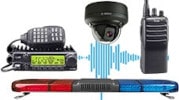- Special Offers
- Transceiver Radio
- Transceiver Accessory
- Antennas
- Antenna Accessory
- Cable
- Connector
- Installation Material
- Installation Tools
- Measuring Equipement
- Radio Device
- Telephone
- Baby Monitor
- Fever Thermometer
- Set-top Boxes
- Hearing Protection and Eye Protection
- Car Equipment
- Voltage Converter
- Dry Cell Battery, Battery
- Battery Charger
- Battery Chargers
- Gel Battery Charger
- Battery Guard
- Emergency Signal
- Amber Signal
- Sound Signal
- Light and Sound Signal Accessory
- Traffic Engineering Equipment
- Lamp
- Smart Home
- Mosquito Repellent Device
- Market - Other Products
- Discontinued Products
Pre-order (0)
Battery Regenerator
- further categoriesClassical batteries have the property that they can be recharged after discharge and have very low internal resistance. This means that they can draw a large amount of current in a short period of time. There are two types of batteries, open cell and closed cell. In open cell batteries, the electrolyte is in a liquid state, each cell has a ventilation hole and, due to evaporation, must be periodically recharged with deionised, i.e. distilled, water. Read more...
Pre-order (0)
The closed-cell version also has lead plates and acid electrolyte, but they are slower to submerge and more prone to sulphation. These types of batteries cannot be charged with just anything, and need a battery regenerator, or battery desulphuriser, for maintenance.
What types of problems does a battery regenerator solve?
The capacity of batteries decreases by approximately 1 percent per day due to self-discharge. The extent of this depends largely on the quality, age and of course the temperature of the battery, so it is best to store them in a cool place. Why? Because the chemical processes take place much more quickly in hot conditions. In addition, if you store your battery for a long time without charging it, the smaller lead sulphate crystals inside the plates will break up into larger pieces, which can render the battery unusable. To avoid this, use a battery regenerator, which charges your battery for days at low voltage.
How can you tell if your battery is suffering from sulphation?
If you put your battery on a charger and its voltage increases rapidly, you may strongly suspect that you are facing sulphation. What does this mean? Crystalline sulphates slowly coat the lead plates and cause a reduction in the capacity of the battery. This is when the battery regenerator needs to be activated. As the regenerator takes effect, the voltage drops and then slowly starts to rise again. This is because the device slowly restarts the chemical processes inside the battery. The desulphation device transmits very short and strong current pulses, so that the sulphate emissions are reduced and slowly decompose.
Are there any hazards or risks associated with battery regeneration?
A battery regenerator is a very effective tool if used properly. What does it mean in this case to use it as intended? It means that batteries should be regenerated at no more than one tenth of their capacity. So if you give your battery a much higher charge, you could destroy it.
What types of batteries can you use the regenerator for?
12 V lead-acid, lead-acid, lead-calcium and AGM batteries can be regenerated with a desulphation device. The abbreviation AGM stands for absorbent glass-fibre batteries.
How long does a battery regeneration process usually take?
It depends on the condition of the battery itself, whether it is for maintenance or for recharging. If it is maintenance, the desulphuriser may be on the battery for weeks or months when it is not in service. However, if it is a battery recharge, it is a multi-stage process that can take days.
How often should battery regenerators be used for optimal performance?
If you want to maintain an out-of-service battery, you can use a battery regenerator for up to several months. Now many of us are probably wondering, when do we stop using a battery? For example, motorcycles hibernate in late autumn and are only taken out in spring when the first sunny afternoon arrives.
If you haven't considered that the battery in your motorbike could go flat from standing still and need regenerative maintenance, your first trip may be to a specialist shop where you can buy a new battery. If we've thought about this possibility, our battery can deliver optimum performance immediately and we can enjoy the pleasures of motorcycling without any problems.
What special preparation is required before regenerating the battery?
When we want to connect a desulphuriser to our battery, we must always make sure that it is connected with the correct polarity. Black on black, red on red. If you do not do this, you could damage the battery. But also make sure that the battery terminals do not rust during storage. This can be prevented by lubricating the battery terminals and terminals with a so-called pole grease.
See our wide range of battery regenerators in the DND webshop!

